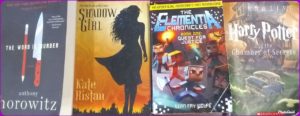Trepidatio Publishing, 2019
ISBN-13: 978-1947654815
Available: Paperback, Kindle edition
Lady Bits is a collection of stories with struggling female protagonists: daughters, mothers, sisters, young women with dreams, cynical and desperate older women. In addition to their other fears and strategems, almost all of them are living in poverty, without a support system. They are the invisible women and girls, inhabiting the shadows in an uncaring world. Jonez’ spare language leaves space for the reader to wander and wonder through the words. This means that while some stories, like “Francie”, where a runaway teenage girl is offered a potentially lucrative job, are predictable, the writing is enough to keep the reader going. Many of the stories have an imaginative creature, such as a hobgoblin, fairy, or demon, at the center, but in an everyday environment that throws the fantastic into sharp relief. “Mountain”, in which a former diner waitress returns from college to discover the owners’ new baby is a nightmare, is a gruesome example of this. Other stories have protagonists who have an unreliable grip on reality. “Fairy Lights,” in which a mother discovers the perils of partying with the fairies, and “A Thousand Stitches”, in which a young seamstress is encouraged by her colorful coworker to escape to the city, use this to advantage.
Jonez is not afraid to venture into the gruesome and squicky, as she does in “Rules for Love”, in which a woman prepares for an unusual Valentine’s Day with a helping of arsenic and body horror, and in “Envy”, in which a wealthy white woman uses her privilege in disturbing, extreme, and deadly ways. “Accidental Doors”, in which a woman who botched her business partner’s murder finds she can step through portals to the past to fix her mistakes, also gets pretty gory. When Jonez’ women decide to do evil, they aren’t worried about getting their hands bloody.
I did start to feel beaten up by the number of stories featuring murderous or uncaring mothers. “A Flicker of Light on Devil’s Night” and “The Moments Between”, in particular, felt very repetitive, and the choice to put one right next to the other was not well thought-out. Followed by the gripping, if incoherent “Poor Me– And Ted”, this is a trio of stories that nearly did me in from exhaustion.
Other stories in this collection included the colorful “All The Day You’ll Have Good Luck,” an entertaining and exasperating story about a girl who is flattered into a dangerous position by a strange young man; “Effigy”, in which a job interview for a nanny position goes very, very wrong; “By the Book”, in which a murderous babysitter discovers patience; “Like Night and Day”, in which Marla Ann’s new neighbor turns out to be more dangerous than he seems, although not enough to keep her from inviting him in for sweet tea; “Silent Passenger”, in which a truck driver discovers a way to alleviate her pain and grief over her husband’s death; and “No Fear of Dragons”, in which the narrator encounters a girl who is not what she seems.
It’s nice to see a variety of female characters taking on different roles in the story, instead of always being passive or victims, but I also wish some of the characters had been easier to relate to. Although feelings were communicated clearly, many character motivations seemed unclear, and that made it hard to get into the flow of the story. This isn’t a collection you can just power through; it takes time to explore what’s going on in each story, and it’s difficult for me to do that and also feel the intense emotions Jonez is trying to evoke. Lady Bits is an interesting, if imperfect collection, and moving forward, I hope we’ll see more strong stories with varied female characters.
Contains: Violence, murder, rape, necrophilia, child murder, terrorism, body horror, sexual situations.
Editor’s note: Lady Bits was nominated to the final ballot of the 2019 Bram Stoker Award in the category of Superior Achievement in a Fiction Collection.







Follow Us!